Liverpool Football Club is to many a first, greatest and occasionally only love; always there in our darkest times, ready to guide us through the storm. But what about the ‘other’ Liverpool?
Some 6,926 miles away from Anfield lies Estadio Belvedere in Montevideo, Uruguay – home to the ‘other’ Liverpool FC, one you’ll find has a Spanish flair to avoid serious doppelganger confusion.
Competing in the Liga Profesional de Primera Division – the top flight of Uruguayan professional football – makes sure Liverpool is a well-established name in the football world on both sides of the equator.
But while the name is all too familiar, the cultural differences, among others, are representative of the distance between Merseyside and Montevideo.
This is the story of Liverpool Futbol Club.
Where did the name come from?
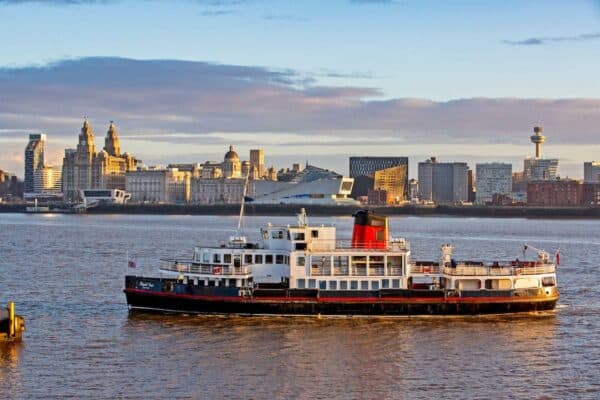
Originally a student team from a Catholic school in the area in 1908, they were officially founded in 1915 as the club took a step towards professionalism and adopted the name that was surprisingly not directly tied to football.
While influence from England and indeed football can be seen across South America, in this instance, the name Liverpool pays homage to Merseyside thanks to its port and coal links, something the local priest confirmed when instructing for a new appellation to be found.
Like the English city, Montevideo is steeped in prominent maritime culture and was once home to a thriving shipping industry that was frequented by ships that set sail from the River Mersey.
The club’s official history tells us that it was Jose Freire who, brilliantly, picked out Liverpool when scouring a map of the United Kingdom.
Their fortunes were not quite a mirror image, nor was the strip donned by the two.
Blue and black…
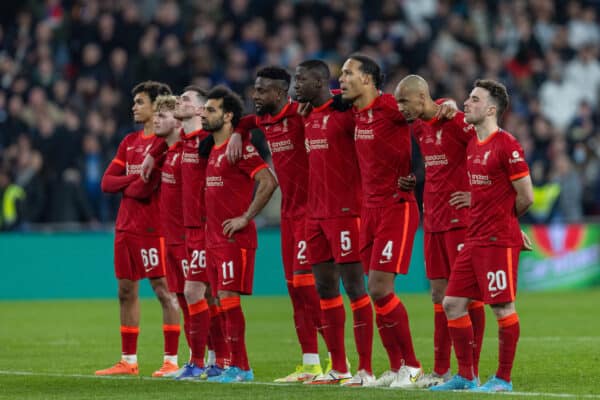
In stark contrast to the red and white of our beloved Anfield club, the Uruguayan capital side adopted black and blue stripes as their club colours, although, some South American supporters do infiltrate home games with the famous red.
“Back in the day, I remember a red flag with an LFC crest being taken to every game,” communications and marketing officer at LFC (Montevideo), Nicolás Aranco told This Is Anfield.
“Nowadays, you can see a banner that reads ‘Nunca Caminarás Solo’ (You’ll Never Walk Alone). There is also a Liverbird on it, painted in black on a blue background.”
As devoted members of a ‘red and white Kop’ it seems preposterous that other colours would make their way onto the iconic stand, however, perhaps we could make allowances for our Uruguayan cousins.
Ones who followed a remarkably similar path to the place they now call home.
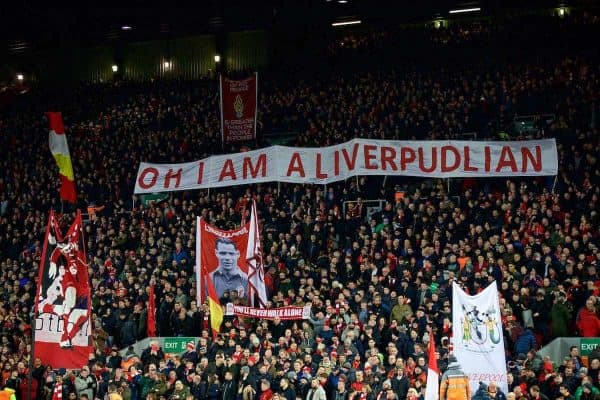
Not unlike the story of Anfield, Liverpool Futbol Club acquired the Estadio Belvedere from their local rivals, Montevideo Wanderers, who following a disagreement over rent had initially moved out.
Where have we heard that before?
The two clubs had then shared usage of the Estadio Belvedere – imagine – for a period but the Wanderers have since moved to a new home that sits just under three kilometres away – nearly the distance of three Stanley Park journeys between Anfield and Goodison.
The Liverpool FC bond
Despite the vast distance between the two clubs, it’s hard to ignore the link that exists and over the years numerous representatives from both sides have acted to bind the two ever closer.
“We heard about a few Liverpudlians that got to know us, and a couple of them even paid a visit to our stadium in Uruguay,” Aranco explained.
Campione pic.twitter.com/OUFutdMhB0
— Jonathon (@jonnyx81) June 26, 2020
“We are not sure about how many Scousers are aware of the existence of the southern hemisphere Liverpool FC, probably just a few.
“But it’s definitely growing thanks to our ties with Spirit of Shankly – what a nice group of people – and the trophies of late won by our club, which put us [somewhat] in the spotlight.
“One fella appeared on an LFC match day programme talking about their love for both Liverpools.
“Needless to say, we welcome anybody who wants to support us!”
From ?? Uruguay to ??????? England… ¡CONGRATULATIONS ? REDS! ? #YWNA #SomosLiverpool
— Liverpool Fútbol Club (@LiverpoolFC1915) June 25, 2020
While 49 major honours have been lifted for those calling Anfield home, success has not been as forthcoming on the other side of the world – although, in 2019/20 the two Liverpool FC’s shared a significant chapter in their respective history.
When Liverpool ended a 30-year wait for a Premier League title in 2020, their South American counterparts were quick to take to Twitter to mark the success.
But Klopp’s side were not the only ones marking the end of a long-awaited trophy lift as their Uruguayan doppelganger lifted their first-ever major trophy in 2019/20 in the shape of the Supercopa thanks to a victory over their most fierce rivals, Nacional.
Congratulations to our friends at @LiverpoolFC1915 #Campeon pic.twitter.com/GEH9WVkmRx
— Spirit of Shankly (@spiritofshankly) March 22, 2021
A success which Aranco was all too delighted to bask in: “We beat them in extra time (4-2) and a year later we battered them 4-0 at their own backyard to grab our first Torneo Clausura trophy ever.”
Their wait for their first top-flight league title goes on but let’s all hope for yet more double celebrations in the not-too-distant future.
“Uruguay breathes football”
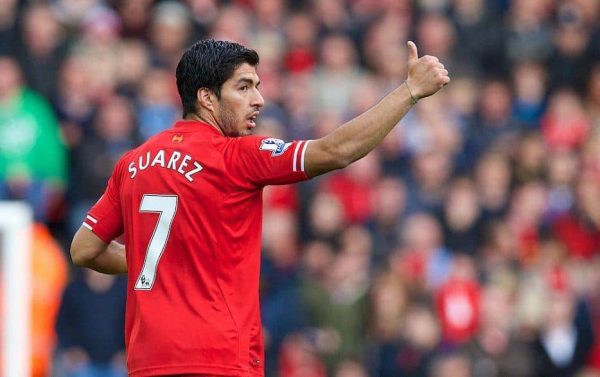
As a working-class, two-club city, Liverpool is famous for its sheer love for football and it would appear that its namesake shares a similar passion for the beautiful game.
Given the popularity of the Premier League, the numerous links and indeed the global nature of Liverpool’s pull, it’s no surprise that the people of Uruguay were lovers of the Reds.
That admiration has never been stronger than when a certain Luis Suarez, a hero on Merseyside and in Uruguay, was achieving extraordinary feats at Anfield.
“Without any exaggeration, never ever has an abroad team been so closely and fervently followed in Uruguay as Liverpool when Suarez was playing there,” Aranco says.
“Uruguay breathes football. Back in those days, a lot of people signed up for the cable operator that had the broadcasting rights for every single Premier League match since that was the way to follow Suarez and Liverpool.
“I’ve never seen something like that.”
Despite being born in Montevideo, ex-Liverpool centre-back Sebastian Coates never quite attracted the same levels of attention.
Liverpool vs Liverpool?
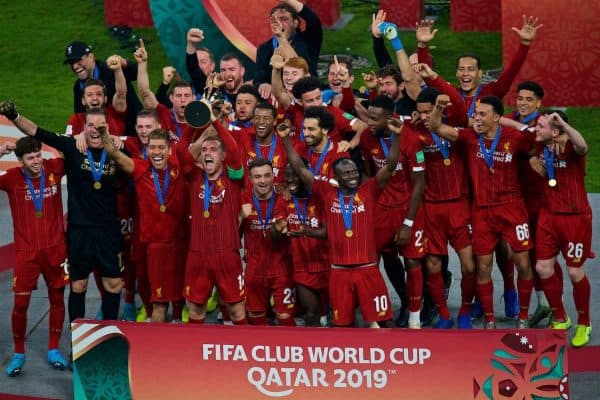
As for present-day, while Klopp’s side continues on their quest for an unprecedented quadruple, the South American outfit sit in fifth position after five matches in the 2022 Uruguayan Primera Division.
Unlike the Reds, the side nicknamed ‘Los Negros de la Cuchilla’ (The Blacks of the Blade) face being eliminated from their continental competition early on after suffering a 1-0 first-round first-leg defeat at the hands of the Argentinian giants, River Plate.
Now that we’re well acquainted with the club, we can support them on their quest for a Liverpool-style comeback in the second leg, but will we ever see the doppelgangers drawn together?
The two clubs share over 200 years of combined history and are yet to meet, something that shows no signs of changing in the near future.
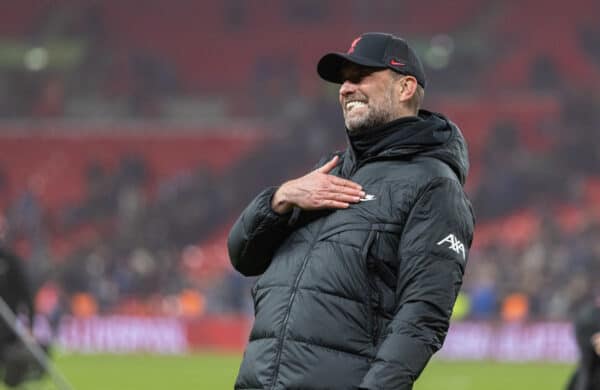
However, should Klopp’s Liverpool lift a seventh UEFA Champions League and Uruguay’s Liverpool finish in the top two of the Primera División and then go on to win the Copa Libertadores, crossing paths in the FIFA Club World Cup isn’t a wholly unrealistic prospect.
In the meantime, perhaps the two clubs should be discussing a friendly to further cement what is an unavoidable connection.
There may only be one Liverpool Football Club for us Reds, but why not give a nod and even keep a close eye on our South American branch.
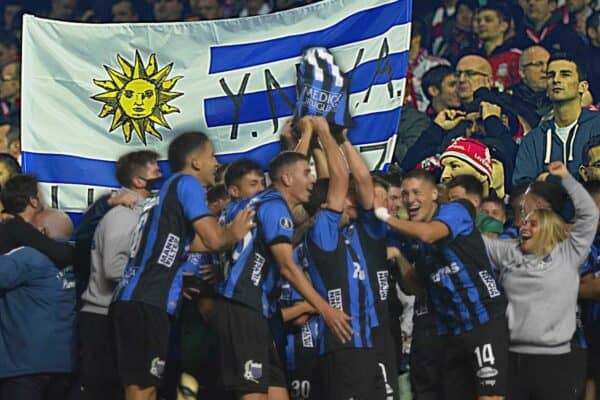


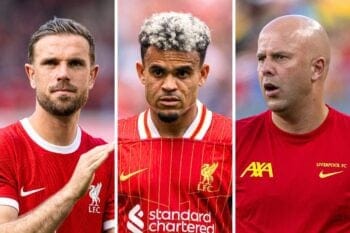
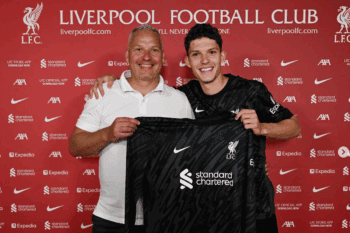











Fan Comments